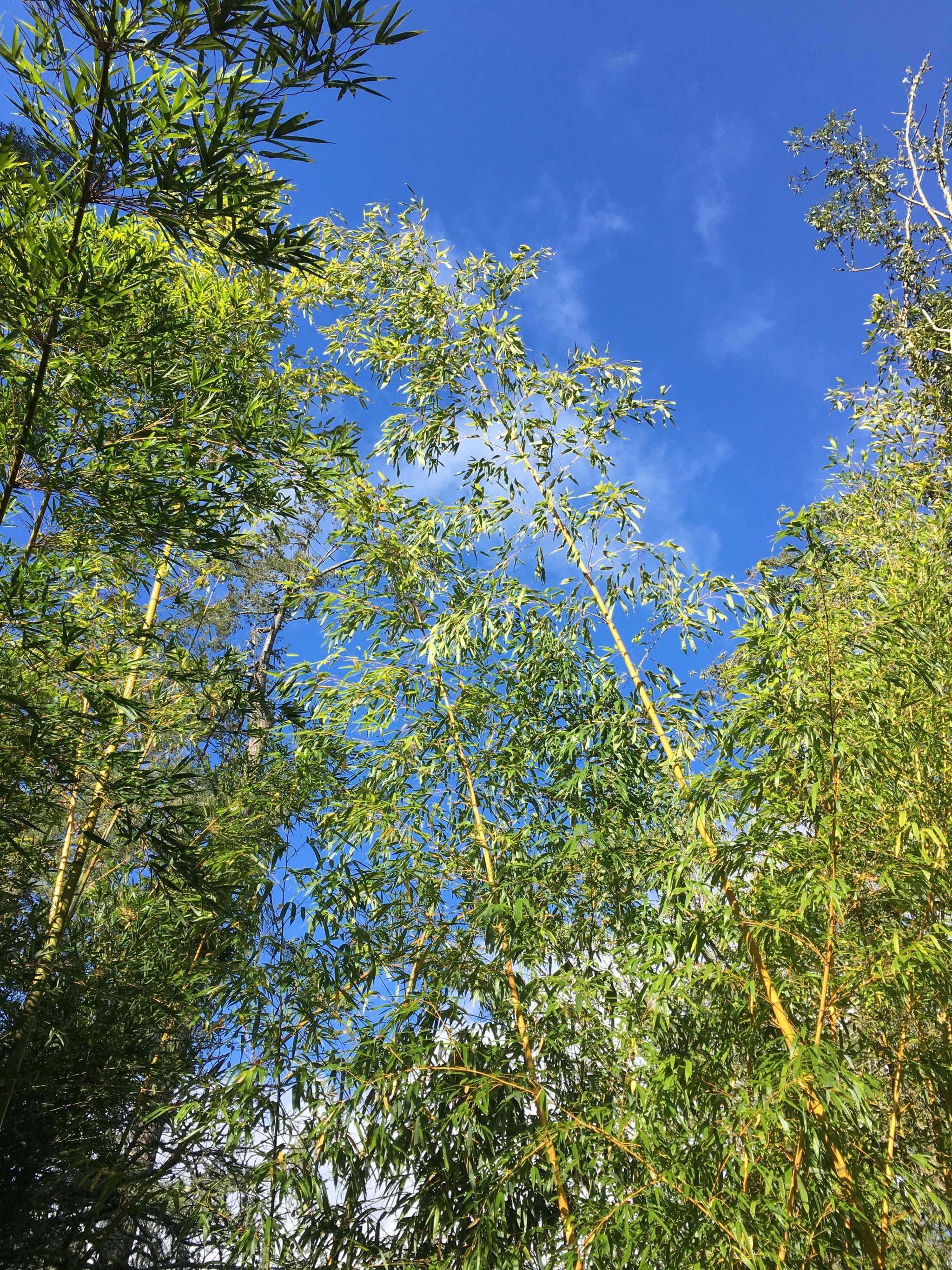Shop Notes Blog

As I mentioned in my previous blog (Bamboo Journey), one of my first steps in starting to work with bamboo was tracking down a source of it. For some of my bamboo, I had to send out to the tropics for it (Florida!), but for other types I can actually get it right here in Northern California. I did an internet search for bamboo nurseries and lo, and behold there was one just a four hour drive from where I live.
It is called Bamboo Sourcery, and it is one of the most remarkable places I’ve visited. It is a plant nursery like none I’ve ever seen before. Descriptions won’t suffice, so I’m putting a whole bunch of photos in this blog to share the experience.
Bamboo Sourcery is located on the side of a hill in a secluded valley in Sebastapol, and it grew up amid the natural landscape of ancient oak trees, tall redwoods, and gnarled apple trees that are left over from an old orchard. Sebastapol is one of the most charming places you’ll find. Very picturesque, with narrow country roads that wind through old farms and orchards (the area was famous for apples—the orchards are everywhere). The orchards are still active, as are the many vineyards, and a great many artists of all kinds make their home in Sebastapol.
So finding a super-cool bamboo garden in the area shouldn’t really have surprised me.
One of the owners (Joe Ruffatto) generously let me select and cut my own bamboo, which was a very satisfying experience. I’ve made two trips to Bamboo Sourcery, and for the first trip I wasn’t really sure what I was up to. I had a vague idea, but because I was totally new to bamboo, I was pretty much winging it. So a certain amount of the bamboo that I harvested didn’t end up being ideal for my purposes. However, I had a good amount of luck on my side and despite my inexperience I ended up with a lot of great pieces of bamboo. That was in December of 2020. My recent trip this month found me much more prepared and knowing. I had spent the last two years working with the various kinds of bamboo, and developing an eye for the selection process. So when I showed up this time I was able to not only harvest much more efficiently, but I was able to select pieces that are sure to be flute-worthy.
This is one of my views as I hiked up the road to the black bamboo grove.
There is something very mystical feeling about wandering a path beneath groves of bamboo, with the dappled sunlight filtering down.
At Bamboo Sourcery, there all of these little paths that snake their way through the groves. As a nursery, there are multitudes of bamboo varieties in containers, but there are also large sections of natural groves that are permanent features of the landscape.
And the wandering paths emerge in surprising places, such as this hidden dell that is perfect for a picnic.
When I actually got ready to harvest, I came prepared. I use bungee cords to secure the culms that I’m going to take because otherwise they will start to fall before the cut is complete and this can split the bamboo at the base. So I learned to tie them to their fellow bamboo to keep them upright. It also prevented them from landing on top of a couple of the staff member’s cars that happened to be parked near where I was cutting!
This is the gorgeous harvest after I cut it to length for flutes. Knowing where to cut and how long to leave certain pieces comes from experience. My goal is to minimize waste and to choose an optimal size for any given type of flute. Long slender pieces will become xiao. Wider pieces will likely become a rim blown flute or shakuhachi.
I could have spent hours taking photos around the seven acre farm–there is a great deal that I wasn’t able to see this trip–but I intend to go back as soon as I can. It’s a beautiful place.
Published Friday, November 11, 2022